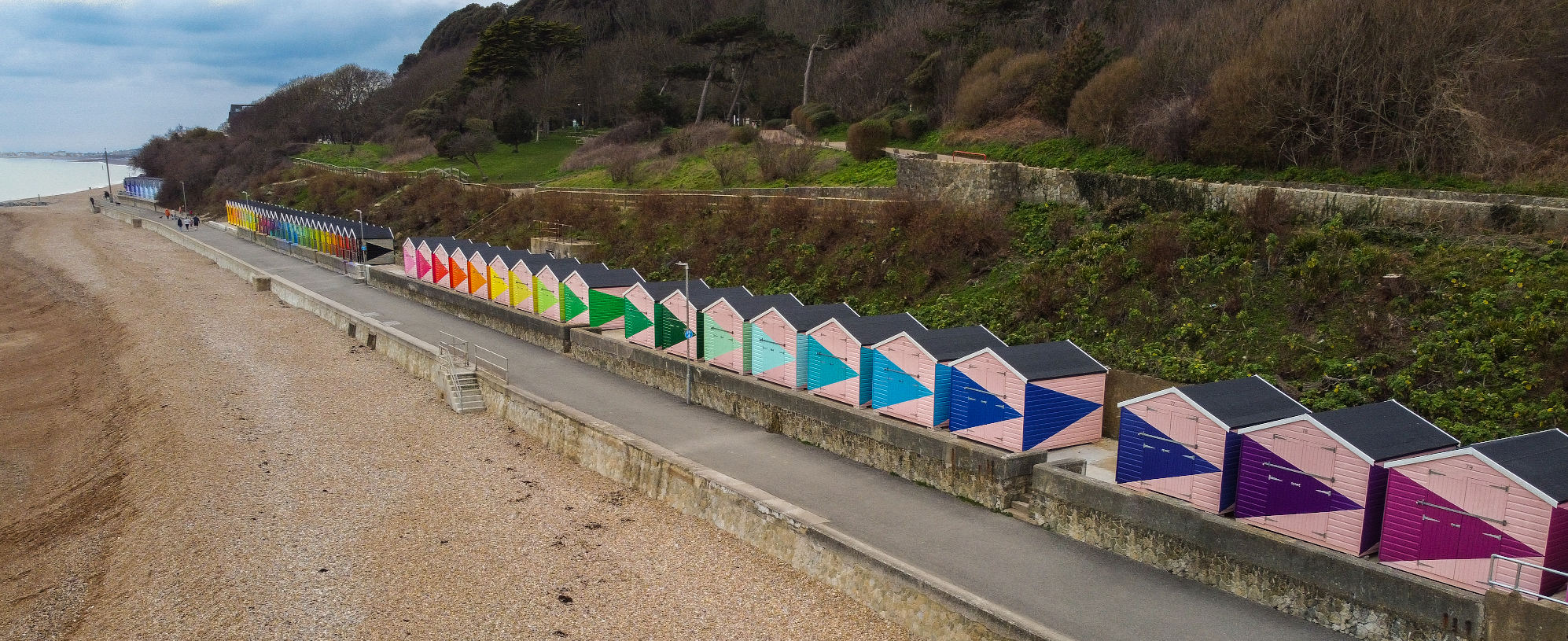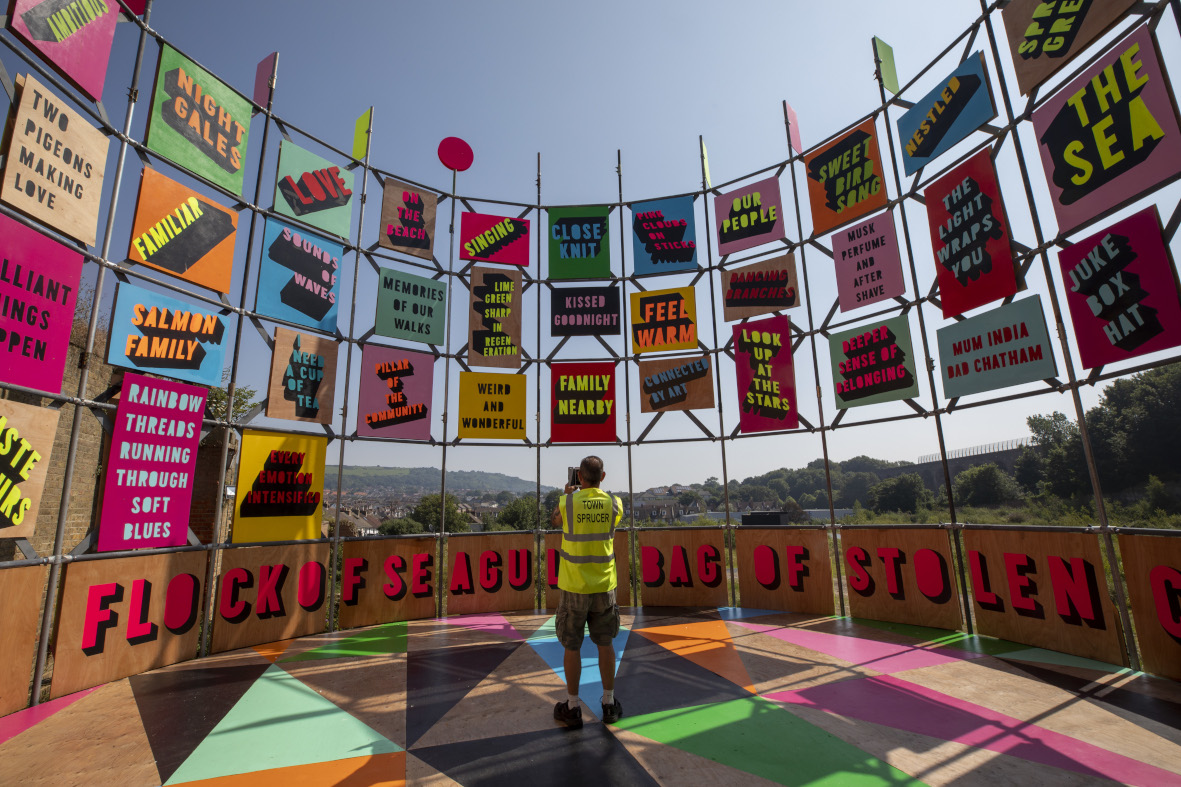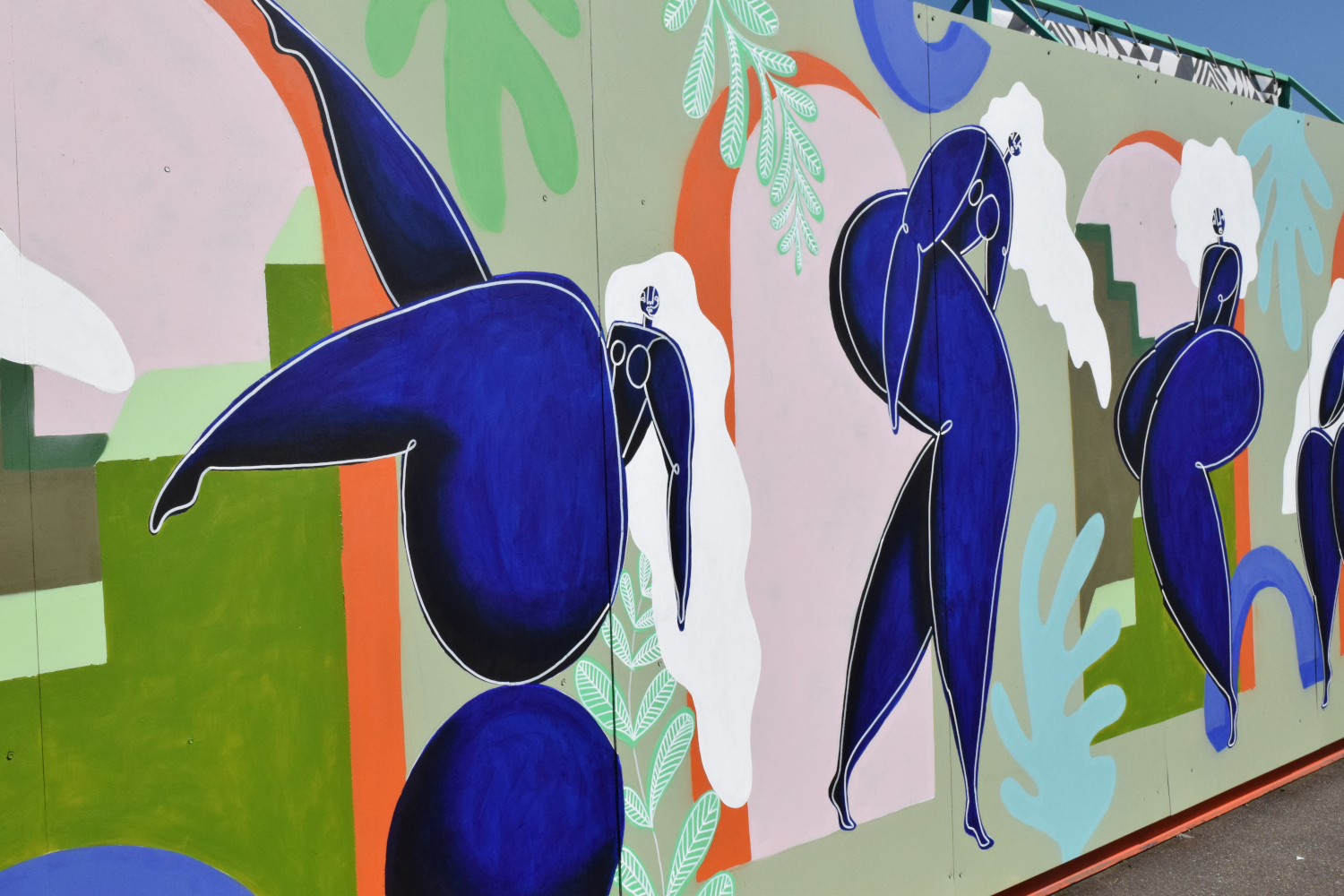Arts & Culture
Regenerating a Town through Art – Creative Folkestone
Alastair Upton, Chief Executive, Creative Folkestone
Creative Folkestone (CF) focuses on bringing art to everyone in the town of Folkestone. It was rebranded from the Creative Foundation in 2019. Alistair Upton has been Chief Executive since 2012. The CF’s charitable objectives are to engage the community, generate and promote creative industry and are helping the town’s economy grow and be sustainable.
Why use art to regenerate a town?
“In 2002, when Creative Folkestone started, the town was a skeleton. The bones were there of the Harbour, the views to France, The Leas, the picturesque nature of the town, but the flesh was gone. The tourism trade had gone, industry had left, the ferries had moved to Dover. We had a town that was quite divided. Tontine Street is on the Pent Stream, the river that made Folkestone, and it was the most rundown part of town.
“The buildings here were incredibly difficult to look after, so people stopped maintaining them. There was no economic drive to allow people to do that. No port, no tourism, and when the employment opportunities leave, the economically mobile leave. Those who find it hard to get a job struggle even more in an economically deprived area.”
Why does creative Folkestone exist?
“There are a number of answers as to why we, Creative Folkestone, exist. Some of it is serendipity and some of it is planned and considered. The Roger De Haan Charitable Trust (RDHCT) was set up by Sir Roger De Haan, he sold Saga in 2004 and is very committed to the town and wants it to do well. At the same time, the Metropole, which was an arts centre in Folkestone, lost its funding from the Arts Council and went to Saga to ask for funding. Sir Roger De Haan wanted to do something for the town and has always been interested in the arts.”
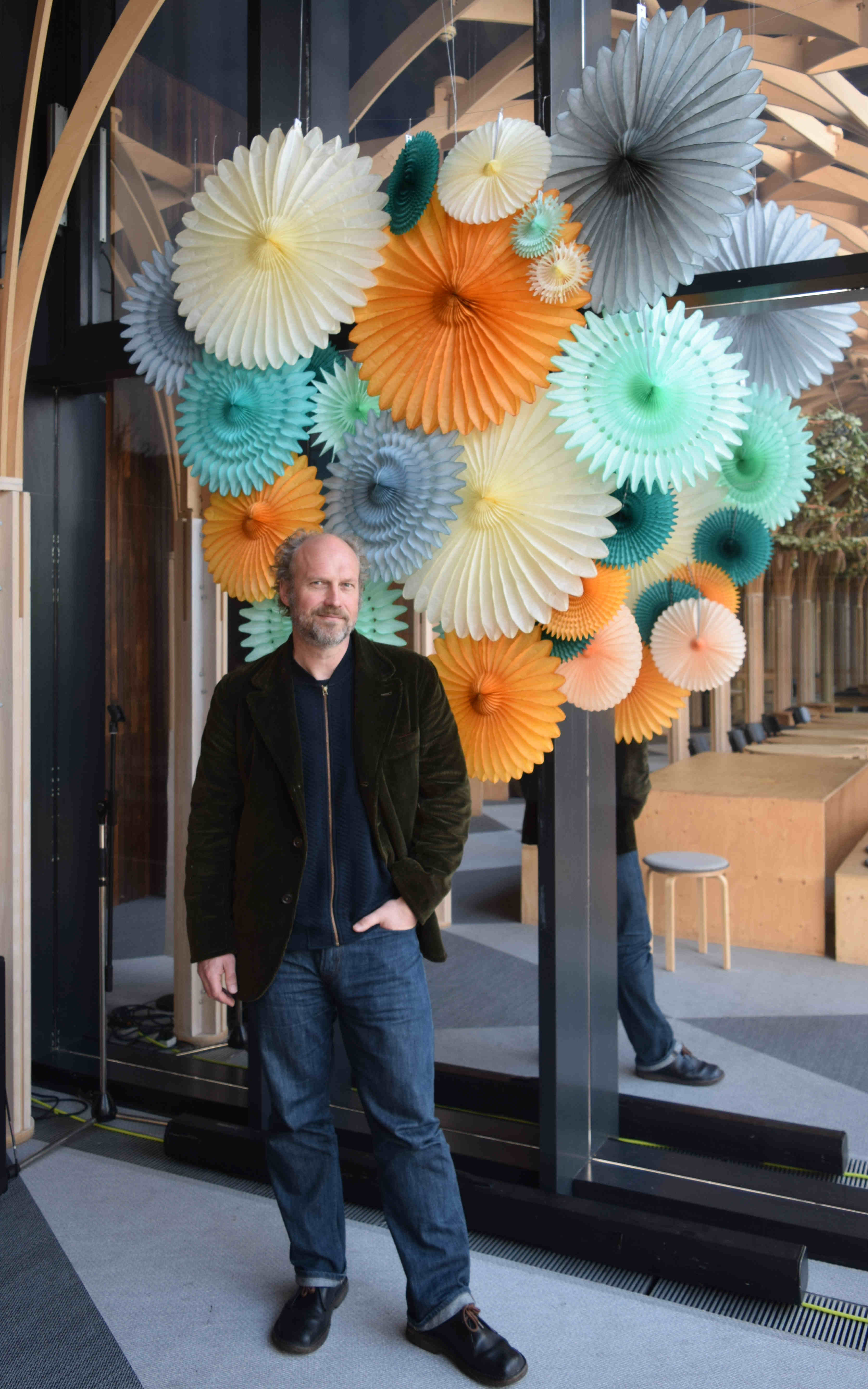
Creative Industries
“Creative industries, for the past 20 years, have been the fastest-growing part of the UK economy. They are not geographically bound by resources of coal or the sea… You also don’t need one major employer in your town as these companies tend to employ small amounts of people. You can develop your town as a creative centre; it needs good communication points to places such as London, but it can be wherever you like.
“So Sir Roger De Haan decided to grow that part of the economy, and in so doing bring back a new economic engine to Folkestone. The RDHCT bought 90 properties and started slowly doing them up. CF was then established and started to think about how you regenerate a town through art. CF took on those properties and rented them to people for creative purposes.”
Building a critical mass
“You are enticing creative people in and giving them the space to start working. As a result you build a hub, you get a critical mass of creatives, not just painters, but potters, makers, and design companies. These grow into bigger creative industries and then you start getting an industry. That in itself is not enough to develop the town though.
“There are two models to creative regeneration – there’s the Margate model, you get a well-known architect to come and build a building and you fill it with visual art. Visitors come; it attracts a certain type of audience, they’re affluent, they come in to the town and they spend, and the money trickles down. Whether it succeeds or not is down to how well it’s done. It’s what happened in Bilbao, Liverpool, Margate. Fundamentally, you’re turning the town back to its tourism roots.”
What makes a town great?
“What we’ve done here in Folkestone is quite different. Ask yourself, what makes a town great to live, work, study and play? Get those elements right, as we have now, and it’s a great place to visit. What we want to do is make it a great place to live. We’ve provided places for those creatives to live and we realised they want to live in a town that’s animated, so we built the Quarterhouse.
“You can entertain with music, dance, and comedy, which not only supports the creatives but it attracts the whole population. I’m not saying that every single person uses the Quarterhouse, not everyone is interested in art and why should they be? But every demographic uses the Quarterhouse.”
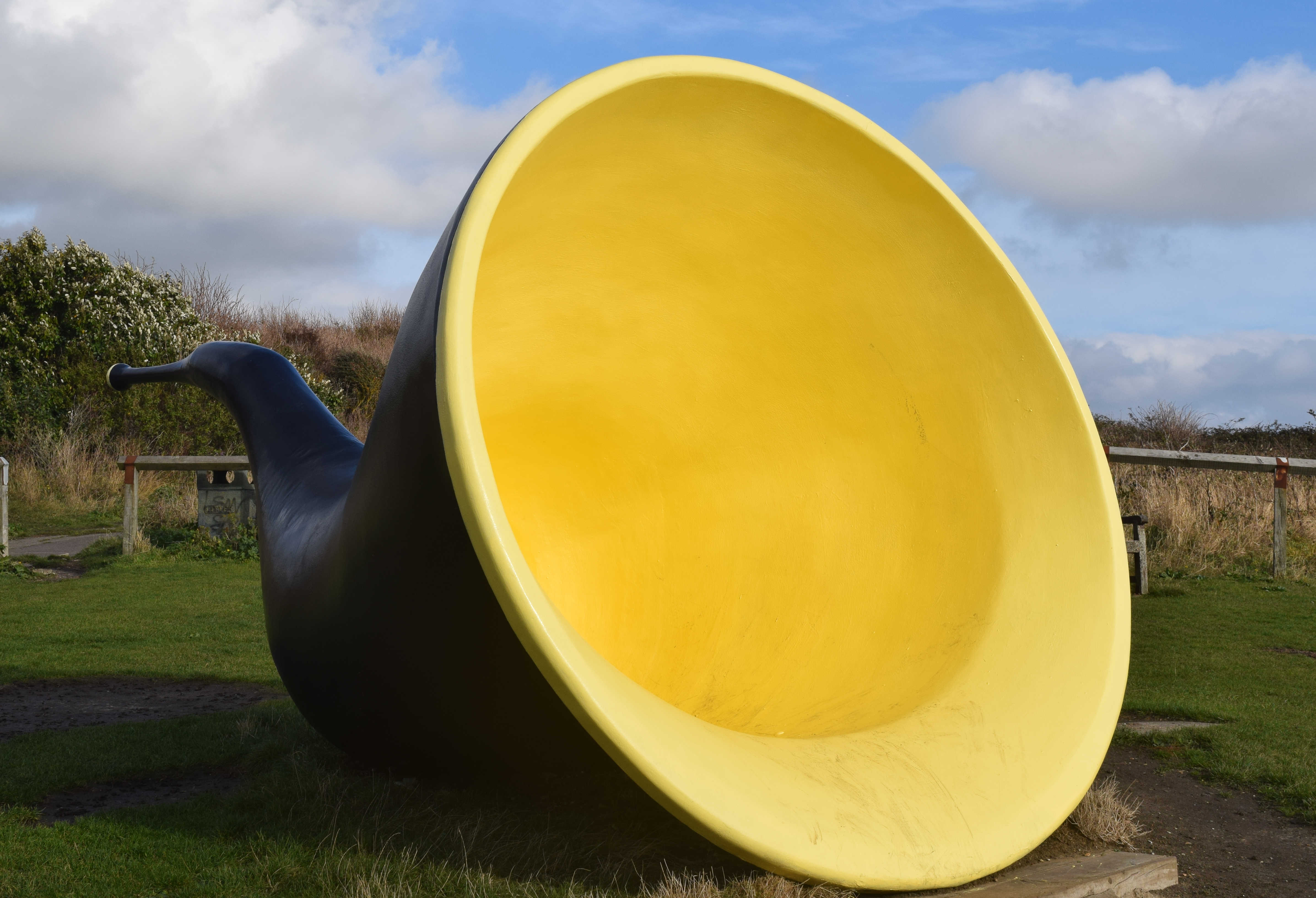
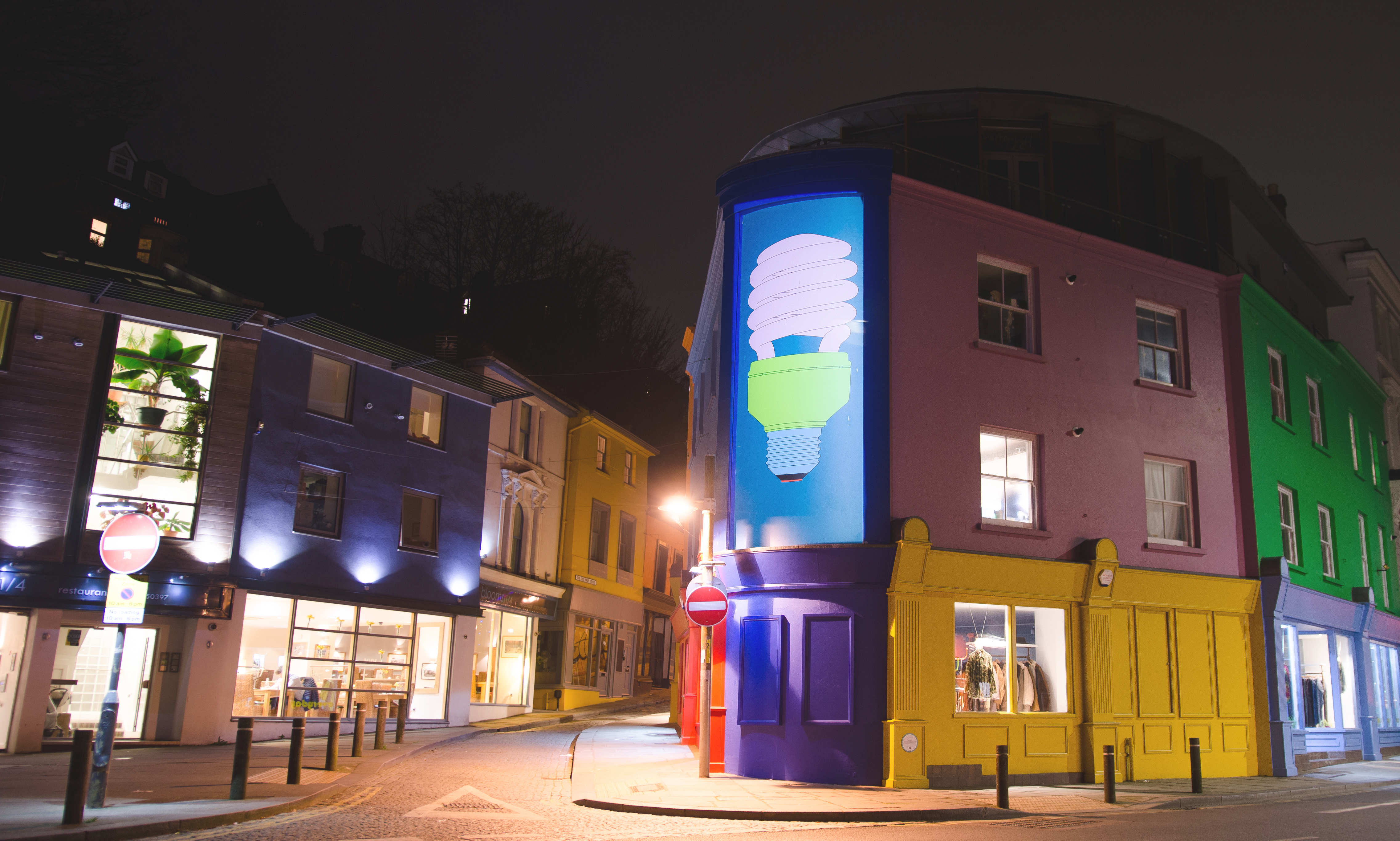

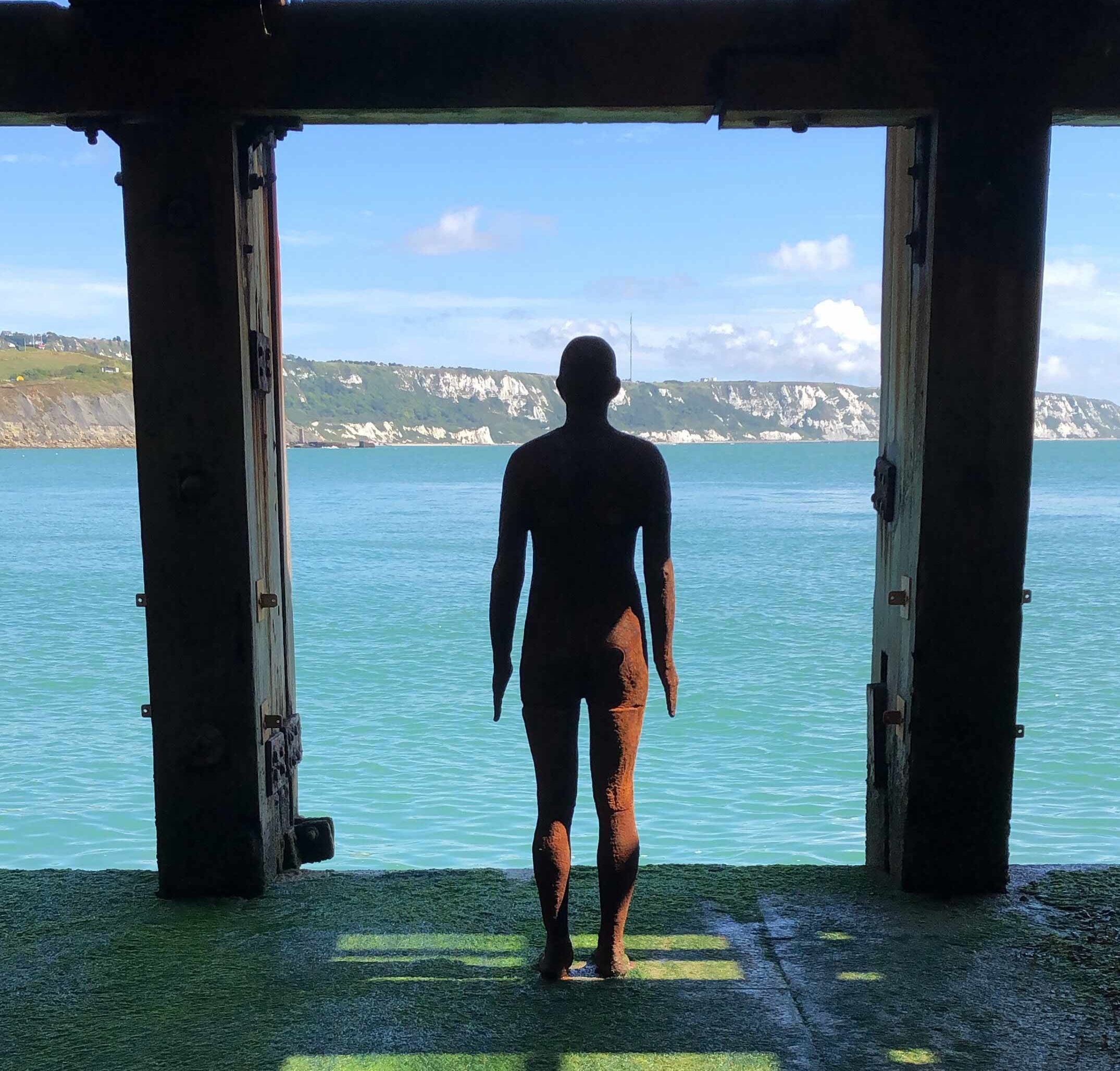
Triennial Art Exhibition
“We set up the Triennials next. Not everyone is going to go to a contemporary art museum, but, put the art on the street and people, to some extent, have no choice! They see it, they might not like it, but they get to experience it. Some people hated our artworks to begin with and now they love them! You barely see a Facebook page advertising Folkestone without using an artwork as part of its banner.
“The Triennial is a huge investment of time and money, and the town then starts to be talked about in a different way. It’s not negative, focusing on the downturn in the economy, but suddenly they’re talking about the town as “Oh yes, isn’t that the town that has …” So then people are placing it next to a positive and you’re changing the reputation of the town. Subsequently people come, they rent places to work or to live, and then they go and buy a house in the town.”
Creative Hub
“We’ve set up a digital hub in the Glassworks. It is 33,000 square foot of creative industries together. We can get bigger businesses here, to move the economy of town onto the next level.
“Digital creative businesses need a range of employees, and those in their 20s and 30s. We’ve done great things for families, and the retired community, but we also need the younger workforce. We need to provide jobs for those people here. A lot of people left when they were in their late teens, and now they’re coming back, thanks to all the many opportunities here.”
bringing energy into folkestone
“Folkestone de-gentrified in a massive way, people left the town and those people were economically-able. They left because employment left the town. To regenerate it some of those people have to be brought back. They can’t all be home-grown, you have to bring energy in from outside to help the town grow.
“Young people now are finding that they want to do digital creative jobs, without realising that this is what is happening in the town. We painted the buildings in the Creative Quarter bright colours over the years, and with intention. We see bright colours as hopeful, and so, in order to bring hope to this area of town, that’s what we did!”
Creative Folkestone time for change
“Making change takes time, it’s not done by Creative Folkestone’s 20 staff running a Triennial and Book Festival, showing a few films and running some clubs. It’s done by many people who say ‘this is how I want my town to look’. Everyone has a hand in it, everyone who wants to be involved. It’s incredibly positive though, ‘I want better for my town, I want better than what it is now.’”
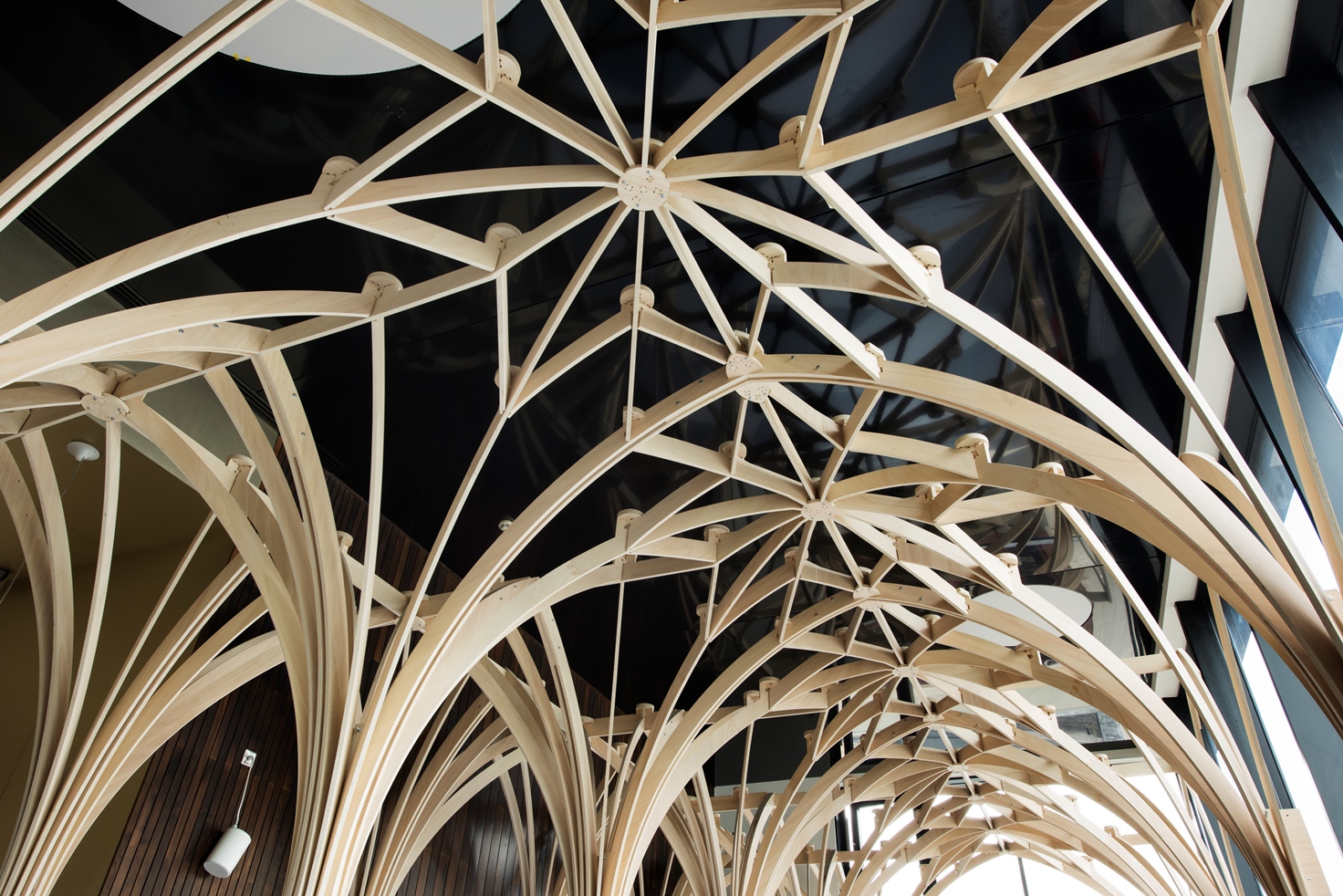
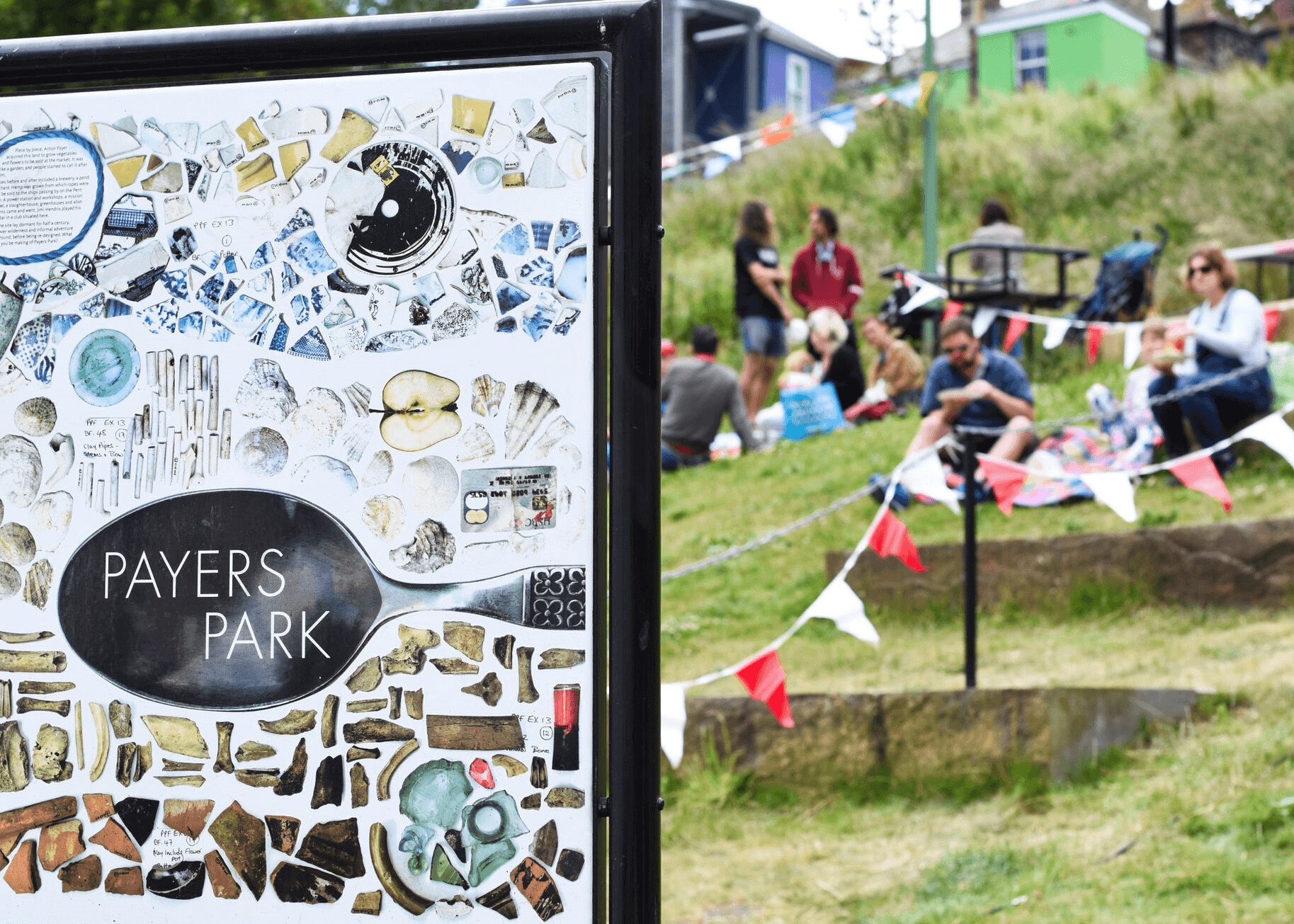
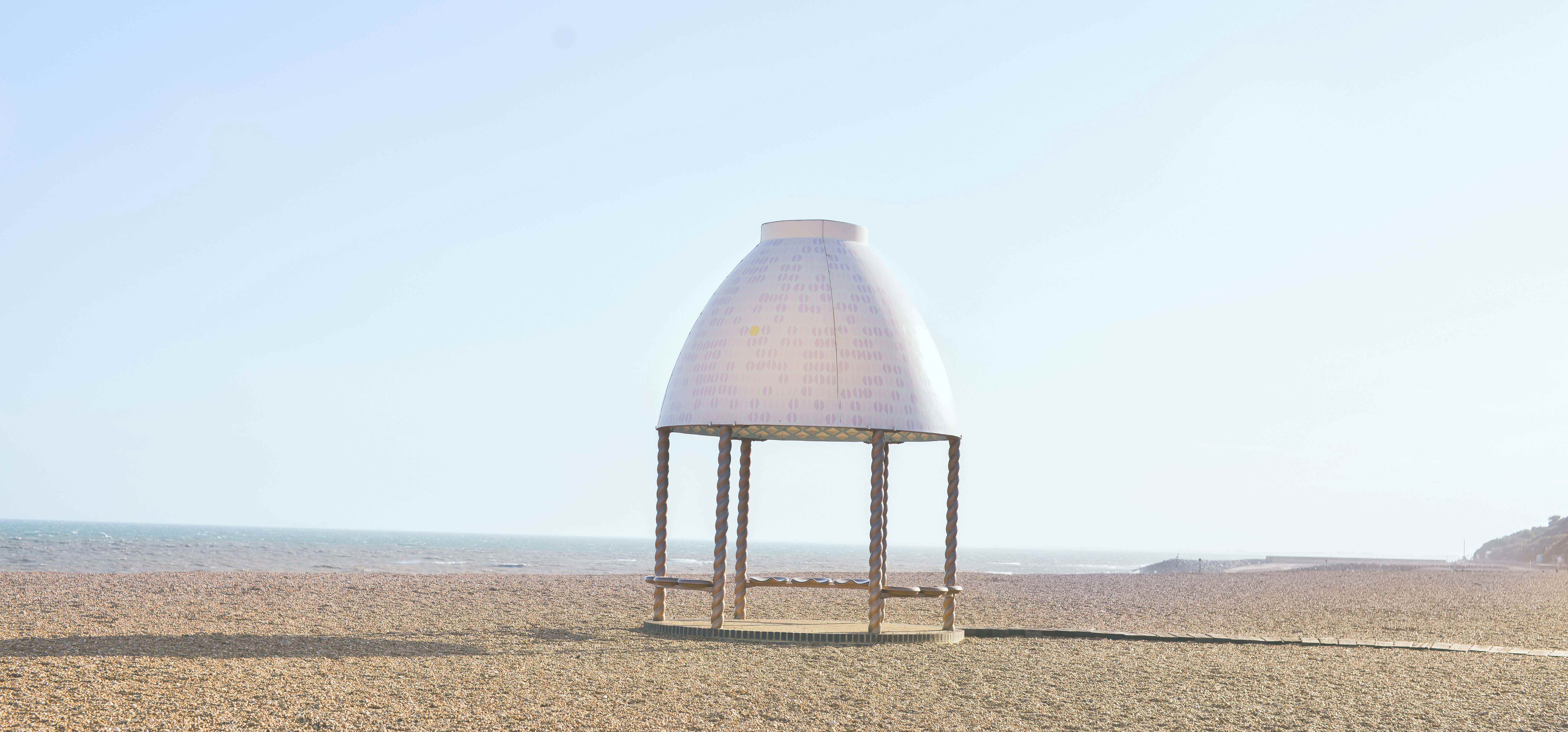
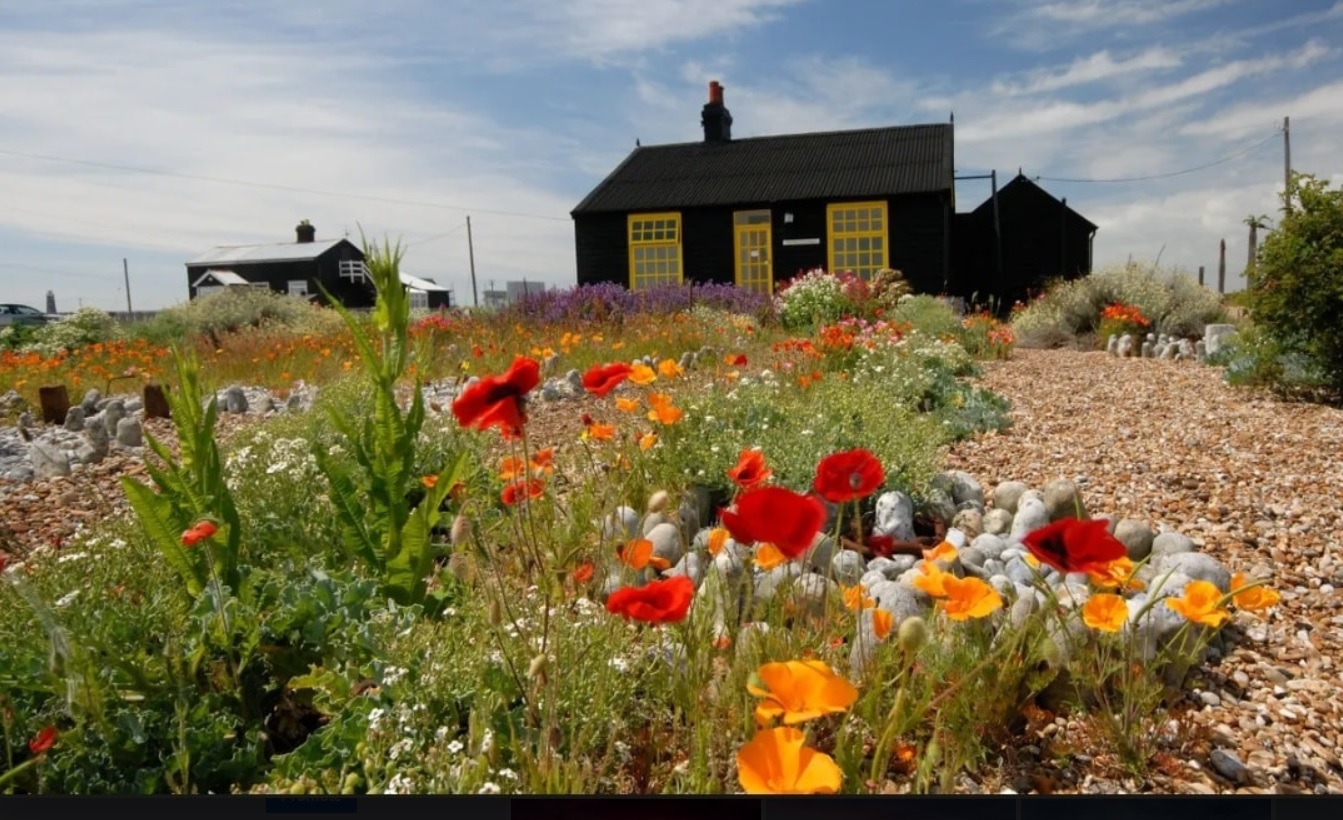
Artworks document our town
“The artworks here tell the story of our town. They document the areas that were accessible when we started the Triennials in 2008. You can see what people thought of the town and how they described it. Yes, we have the universal stories of environment, homelessness, political status and all of that, everywhere has that. But we are special and unique, and our artworks help tell everyone what we have to offer.
“2019 saw the Creative Foundation change its name to Creative Folkestone and now we’re moving on to develop what we’ve started. We’ve laid the foundations and we have something solid to work from. Now everyone can take that and run with it and we can see where we go from here…”
Derek Jarman’s Prospect Cottage
In 2020, Creative Folkestone became the custodians of Prospect Cottage, the home of artist and film-maker Derek Jarman. Following a nationwide appeal to raise £3.5 million, the CF can use this endowment for maintenance of the building and garden. They will also create a residency programme for artists, academics, writers, gardeners, filmmakers and others interested in Jarman’s work.
Alastair Upton, Chief Executive of Creative Folkestone, said, “We are honoured to be entrusted with the responsibility of caring for this masterful artwork. Over the coming years we will begin a journey of ensuring that the long lasting legacy of Derek Jarman in Dungeness continues to inspire artists, activists, creatives and gardeners as they take up residency and make work for us all to enjoy. As we celebrate this successful campaign to save Prospect Cottage and continue a great artists legacy, we are once again reminded that, now more than ever, art offers hope.”
Photo credit Prospect Cottage: Richard Bird
